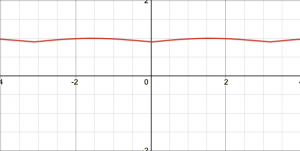How I Would Improve It
Due to printing issues, I was incapable of improving on the project. However, I did spend some time at home stabilizing the structure. The majority of other improvements I would make is miniaturizing the wiring for the AC to DC converter.
How it works:
The AC generator works through Faraday’s law, which states a changing B-field will create a movement of electric charge. The design used has a generator stator and rotor, with the rotor containing a few strong magnets.

The stator is consisted of 3 pairs of wire coils (These are commonly named as Inductors) with the paired coils on the opposite end and the three pairs are separated by 120° of angular distance.

Following Faraday’s law, we may observe that when the rotor, which has magnets to produce a magnetic field, moves, the changing B-field would cause a movement of electrons. As the magnet approaches 180 degrees of rotation, the B-field would become opposite to as it was in the beginning, causing the electrons to flow the other way. This is how AC current is created. I utilized the Wye connection formation to connect the three coils (This generator is technically named the three-phase generator as it produced 3 separate AC Voltage waves each 120° or 2/3 Radians apart). This formation connects the three coils to allow the current to flow.




The AC to DC converter is slightly more complicated. The device uses a group of diodes to run the sinusoid curve function of AC Voltage through an absolute value function (i.e. turns the direction of the electrons to always one direction, but does not ensure they move at the same speed). The function now looks like a bunch of humps, as can be observed from the graphed images. Then, this new function is run through a large amount of capacitors.
These capacitors are used in a special case: They will try to maintain a stable electromotive force (emf) between its two ends (place the capacitors in parallel to the load. If placed in series, a different effect will occur), meaning that it will attempt to smoothen the curve. They do this by storing electrons when there is too much emf and release electrons when there is too little emf. Following multiple capacitors, the voltage would be smooth enough for most household items to use as well as to charge batteries.










